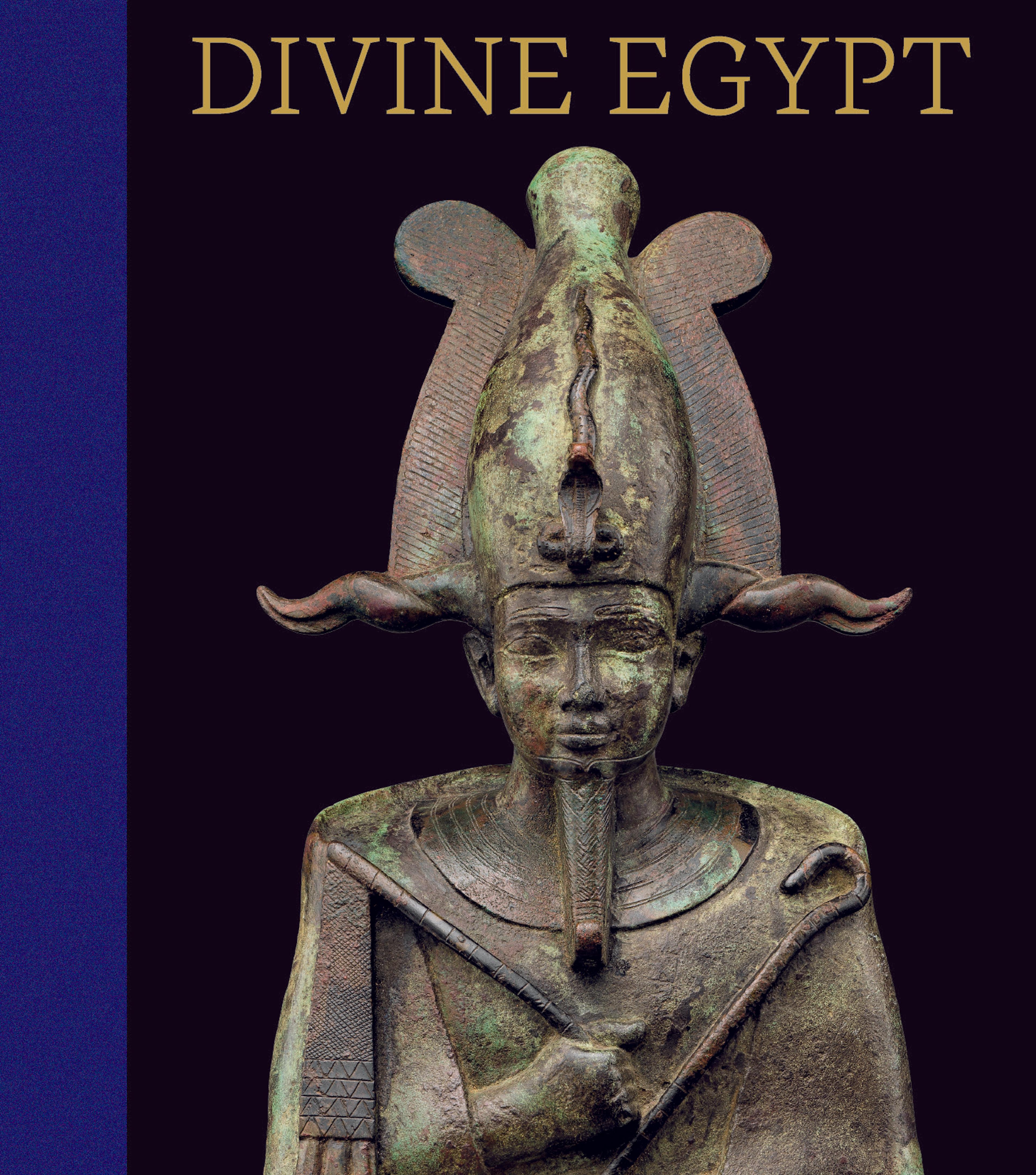Stela with Taweret and Mut of Isheru
The two goddesses shown here were associated with women. Although they face one another, in the conventions of Egyptian art they are meant to be seen as standing side by side, facing the viewer. Taweret appears on the left, identified by the inscription in front of her as "Taweret, mistress of the sky." On her head she wears a sun disk and cow's horns. Although Taweret herself is not usually associated with the sky, this feature, and her epithet, are probably borrowed from Hathor, the goddess of femininity and love, indicating that here Taweret represents the female sex itself. In keeping with her usual role as a protective force for women during and after childbirth, her protruding belly suggests pregnancy.
The image on the right is identified by its inscription as "Mut the great, mistress of Isheru." This goddess was the wife of Amun and embodied the principle of motherhood; her name itself means "mother." She is represented here by a human head atop a chest, which may be a symbolic representation of the womb.
The stela was commissioned by a man whose name and partially preserved title are inscribed at bottom: "[ … ] of [the house of] Amun, Khonsu." The stela's imagery suggests that it was in-tended as a votive offering by its donor seeking the intercession of Taweret and Mut for a woman's successful pregnancy and childbirth.
The image on the right is identified by its inscription as "Mut the great, mistress of Isheru." This goddess was the wife of Amun and embodied the principle of motherhood; her name itself means "mother." She is represented here by a human head atop a chest, which may be a symbolic representation of the womb.
The stela was commissioned by a man whose name and partially preserved title are inscribed at bottom: "[ … ] of [the house of] Amun, Khonsu." The stela's imagery suggests that it was in-tended as a votive offering by its donor seeking the intercession of Taweret and Mut for a woman's successful pregnancy and childbirth.
Artwork Details
- Title:Stela with Taweret and Mut of Isheru
- Period:New Kingdom
- Dynasty:Dynasty 18
- Reign:reign of Amenhotep III
- Date:ca. 1390–1352 BCE
- Geography:From Egypt; Probably from Upper Egypt, Thebes, Deir el-Medina
- Medium:Limestone, paint
- Dimensions:H. 18.5 × W. 14.4 × D. 4.1 cm (7 5/16 × 5 11/16 × 1 5/8 in.)
- Credit Line:Dodge Fund, 1947
- Object Number:47.105.4
- Curatorial Department: Egyptian Art
More Artwork
Research Resources
The Met provides unparalleled resources for research and welcomes an international community of students and scholars. The Met's Open Access API is where creators and researchers can connect to the The Met collection. Open Access data and public domain images are available for unrestricted commercial and noncommercial use without permission or fee.
To request images under copyright and other restrictions, please use this Image Request form.
Feedback
We continue to research and examine historical and cultural context for objects in The Met collection. If you have comments or questions about this object record, please contact us using the form below. The Museum looks forward to receiving your comments.
